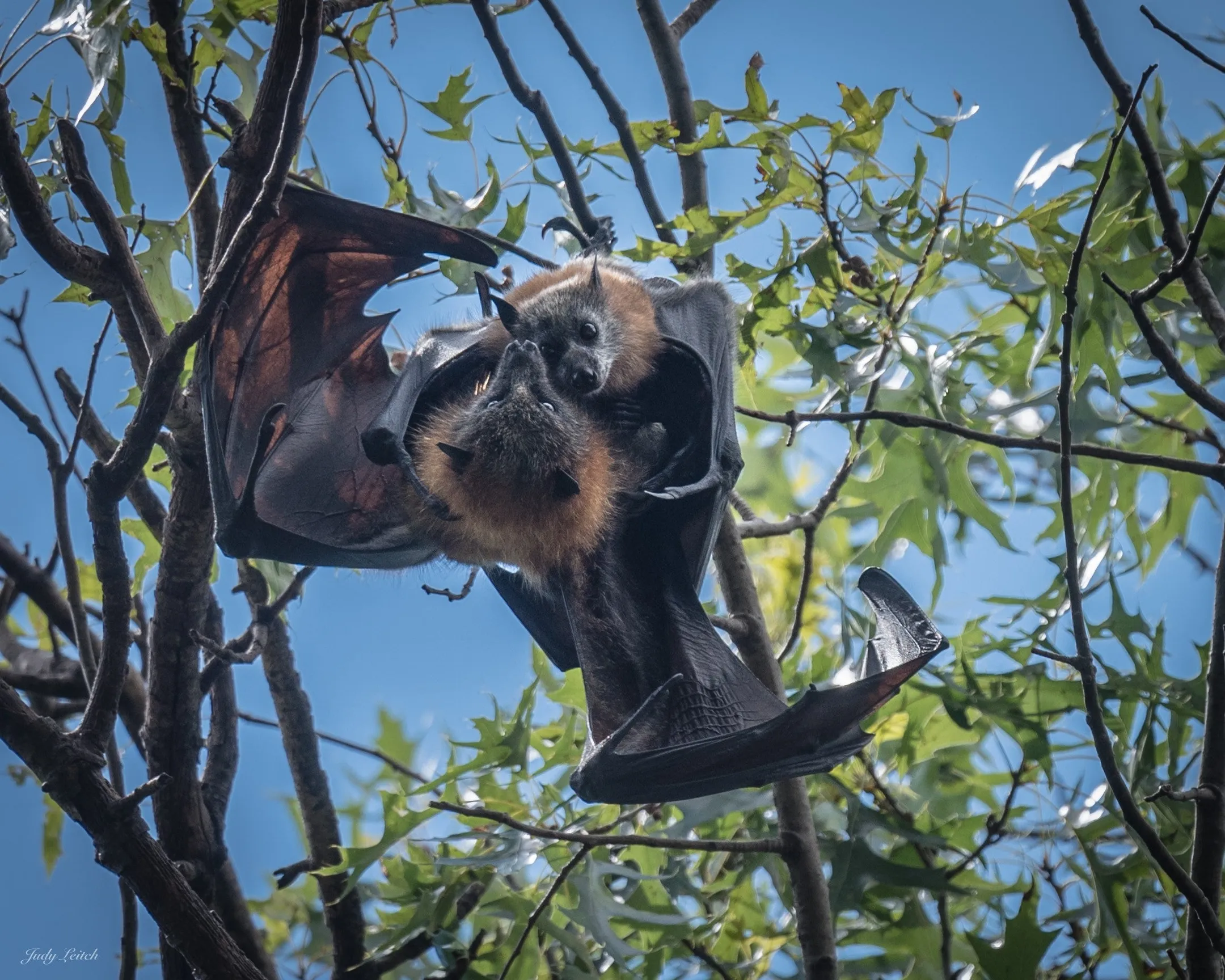Flying-fox pups are on their way!
Read about flying-foxes and how mums look after their pups.

Judy Leitch
Article by Natural Areas Conservation Officer, Sunshine Coast Council
One of the greatest challenges in flying-fox management is to share the essential role these native animals play in maintaining forest biodiversity with our community and cut through the misconceptions about the species. You may already know flying-foxes pollinate flowers as they feed upon nectar and distribute seeds of rainforest trees when they eat fruit. Did you also know about the important ecosystem services flying-foxes contribute to our environment.
While some people may think flying fox populations are increasing – the fact is the opposite is true - their populations are decreasing.
In population biology, recruitment is the term used for the process of new individuals entering a population, either by birth or immigration. Flying-foxes are highly mobile animals, where their populations are not discrete. For example, an individual grey-headed flying-fox can traverse the entire biogeographic range of the species, and in theory could interact with all individuals within the population. What this means is that there is no immigration from other populations, because animals can move around the entire population, and consequently all recruitment into flying-fox populations only occurs through births. Recruitment into flying-fox populations is low, because breeding females only give birth to one young, known as a ‘pup,’ a year. Their biology restricts population growth, where populations can only increase slowly.
Three species of flying-fox are found on the Sunshine Coast: the grey-headed flying-fox, black flying fox, and little red flying-fox. Grey-headed and Black flying foxes breed in March and April, then give birth from late September, through October and November. Often the pregnant females will return to specific roosts closer to the coast, where the roost population may grow as animals move in. Once born, a pup will cling to its mother for the first four to six weeks while they roost and fly about the landscape foraging. At around six weeks the pup will be too big and heavy to carry, and mother bats leave them in a crèche area within the roost when they leave to forage at night. When they return before sunrise the following morning, mothers recognise their pups by scent and vocalisations.
Flying-foxes are capable of flight around three months but continue to feed upon their mother’s milk for up to six months, after which they are able to forage independently. Mother flying-foxes and their pups are particularly vulnerable to stress and predation, and consequently Sunshine Coast Council avoid management actions during this time.
In addition to natural hazards, modern urban and rural landscapes are challenging for wildlife, and foraging flying-foxes occasionally get caught out or injured. Mother flying-foxes and/or their young are occasionally found away from their roosts in vulnerable locations. Consequently, you may come across a stranded and injured bat.
If you come across any injured bat, do not touch the animal, or attempt to rescue it yourself. Like many wild animals, there are disease risks associated with bats, which wildlife carers are vaccinated against. If you do come across an injured flying-fox or any other bat, contact the RSPCA hotline on 1300 264 625, or Bat Rescue Inc on (07) 5441 6200.
If you see a flying-fox electrocuted on powerlines, contact one of these wildlife organisations immediately. Sometimes pups will survive the electrocution, and the pup will cling to its mother until it dies. Energy providers can assist wildlife carers to remove the dead flying-fox and rescue the live pup.
To find out more about flying-foxes and what Sunshine Coast Council does to manage these critically important native animals, please visit our BatMap webpage on Council’s Website or simply type BatMap into the search bar on the website’s home page.
